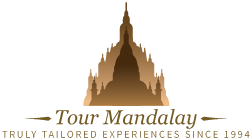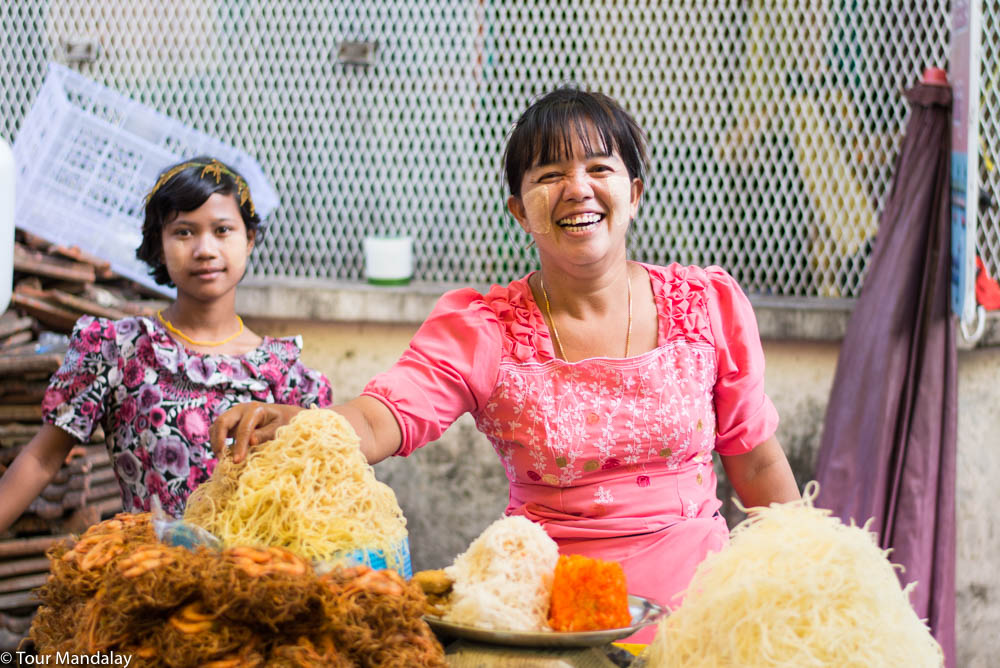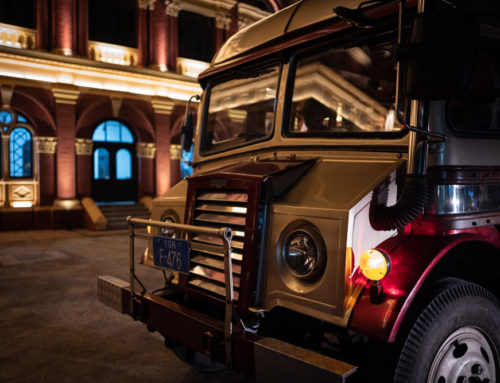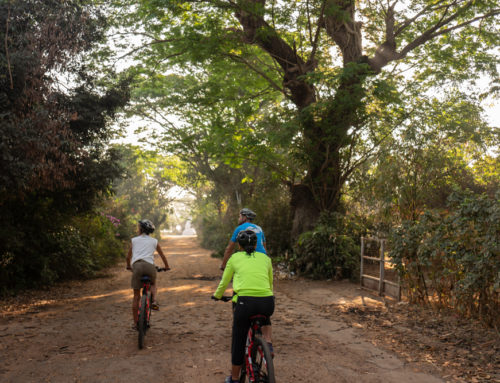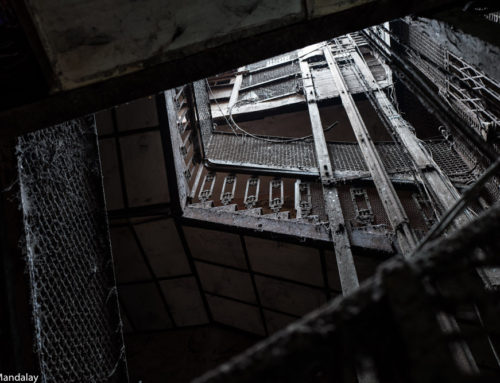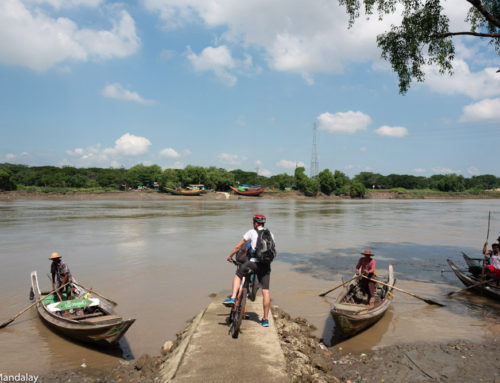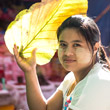YANGON ESSENTIALS

![]() OVERVIEW
OVERVIEW
An action packed and engaging half day tour showcasing some of Yangon’s key attractions. Excluding Shwedagon Pagoda, as that’s almost a half day excursion in itself, we’ll start at the touristy, yet worthwhile Bogyoke (Scott) Market to awaken our senses with the sound of barter and a cacophony of brightly coloured souvenir items. From here it’s then a short walk down one of the city’s narrow alleyways before reaching Sule Pagoda, the central point around which the city’s colonial layout was based. Witness a more relaxed side of local life inside Maha Bandula Park, whilst admiring myriad colonial architecture from the Independence Monument. Proceed to wind your way through the streets until you reach the iconic Strand Hotel. From here, we’ll drive to Kandawgyi Lake, one of two major lakes in the city, to enjoy views of Shwedagon and Karaweik Palace, two of the city’s most photographed landmarks.
![]() PACE
PACE
Medium
![]() TOUR PERIOD
TOUR PERIOD
Half day
![]() HIGHLIGHTS
HIGHLIGHTS
- Awaken your senses with the sounds, colours and smells of Bogyoke (Scott) Market.
- Escape the hustle and bustle and enjoy a slower pace of life at Maha Bandula Park and Kandawgyi Lake.
- Tick off some of the best colonial relics.
- If time permits, visit a fortune teller at Sule Pagoda.
![]()
ITINERARY IN DETAIL
(Click to read)
Transfer from your hotel (or a destination of your choosing) to the popular Bogyoke (Scott) Market, one of Yangon’s largest bazaars, stocking everything from dubious antiques to tailor-made clothing. Built in 1926, the market has long functioned as an important commercial and social hub. A visit here especially in the morning, is a great way of awakening your senses to the non-stop, bustling nature of the city. After a quick wonder around, cross the congested road to the front and walk down one of the narrow streets leading to Anawratha Road. One of our favourites is Bo Soon Pat Street, which takes you past the country’s first KFC (a stark reminder that Myanmar’s fast opening up to the world!), a Hindu temple, Catholic church and rows of heavily weathered, patchy coloured colonial facades.
As you approach the end of the alley, immediately visible to the left is the ancient Sule Pagoda, arguably the second most important Buddhist pagoda in the city after Shwedagon. Designated the central point of the city by Lt. Alexander Fraser, the person responsible for downtown’s original layout in the middle of the 19th century, the pagoda has long played an important part in the city’s history. Perhaps even more so when it served as the rallying point for both the 1988 and 2007 uprisings. A lot has changed since then, but we feel knowing this helps to covey the monument’s cultural, religious and historical significance even more. If time permits, why not stop to have your palms read by one of the fortune tellers located outside? Most Myanmar people are extremely superstitious and many aspects of daily life (even politics!) are dictated by it.
Located just across the road is Maha Bandula Park, named after General Maha Bandula who fought against the British in the First Anglo-Burmese War (1824-1826). Most people’s eyes tend to gravitate towards the tall pointy monument in the centre, a symbol of Myanmar’s independence from the British in 1948. The architect behind this, Sithu U Tin, also built the City Hall (located at the north end of the park) and Yangon Central Railway Station. From the foot of the monument, it’s possible to enjoy a wide-open perspective of some architectural delights including the aforementioned City Hall, the Rowe & Co department building (once the Harrods of South East Asia), the High Court and the recently opened Yangon Stock Exchange.
We’ll then walk past the front of Yangon Stock Exchange before turning off onto Bank Street, a narrow road home to the Balthazar Building – this is a hard-hitting example of the challenge the municipal government faces when it comes to preserving city’s long-neglected colonial real estate. Some heritage buildings have fared a lot better though, with one of the best examples being the restored Police Commissioner’s Office visible immediately opposite. Now under the management of a luxury hotel group, we like to think this offers a glimpse of the upcoming nationwide heritage development opportunities that lay in store.
Continue along Bank Street until you reach Lower Pansodan Road, famous for having the largest concentration of colonial buildings, ranging from the Sofaer Building to the tower-like Port Authority. Crossing the road towards Port Authority, we’ll then walk a short section of Strand Road until we arrive at The Strand Hotel. Acquired by Aviet and Tigran Sarkie in 1901, it has long been regarded as “the finest hostelry east of the Suez” patronised by royalty, nobility and famous names such as George Orwell, Mick Jagger and David Rockefeller. Other patrons have included a team of horses, stabled in the hotel’s bar during the Japanese occupation from 1942 to 1945. Those keen to venture inside will be required to make a purchase, giving you the perfect excuse to enjoy a midday tipple (or two!). Stuck for ideas? The British Desire and Yangon Gentleman cocktails come highly recommended.
Reconvene with the driver who’ll ferry you a couple of kilometres north to Kandawgyi Royal Lake. Originally created by the British colonial administration to provide clean water to the city, it has now become a popular spot for couples, aspiring musicians and light exercise enthusiasts. On the eastern side of the lake, you’ll notice one of the city’s slightly more modern and extravagant looking landmarks, the Karaweik barge. Built in 1972 as a faithful replica of an ancient royal barge, it was once home to the office of the Ministry of Hotels and Tourism, but now functions as a buffet restaurant and events venue. The undeniable highlight of a trip here is the view of Shwedagon Pagoda, as it sits peacefully and perfectly composed in the background.
Transfer back to the hotel (or a destination of your choosing), or continue on to your next excursion.
![]()
INCLUSIONS
- Transportation to/from hotel in an air-conditioned vehicle
- Entrance fees
- English speaking tour guide (for other languages, please enquire)
- Drinking water and hand towel
![]()
EXCLUSIONS
- Any meals
- Cocktails at The Strand Hotel
![]() NOTES
NOTES
- Bogyoke market is closed on Mondays and public holidays.
- A supplementary fee may apply on certain days – Tour Mandalay will inform you of this beforehand.
![]() PRINT
PRINT
![]() LOCATION
LOCATION
